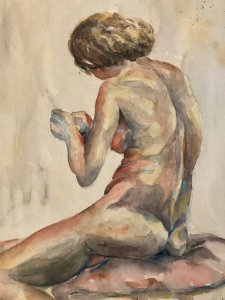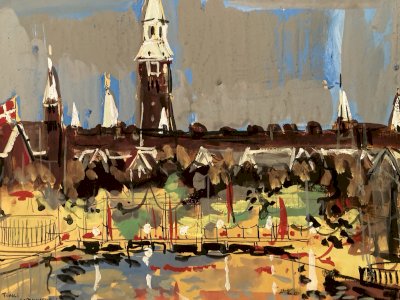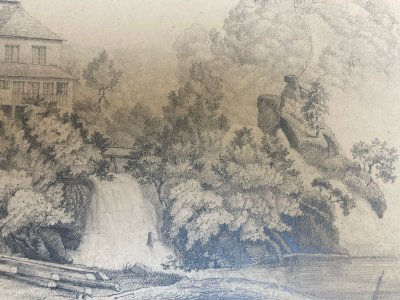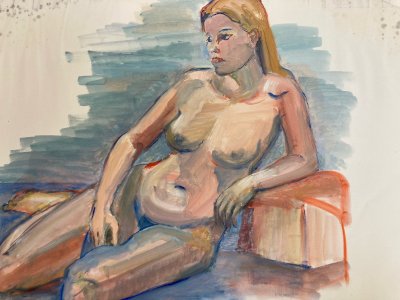- Sell Now
- Home
-
FURNISH
All STORAGE FURNITURE • Wardrobe • Chests of drawers, Chiffonnier • Sideboard • Shelves, Bookshelves • File cabinet • Sewing Furniture • Bar cabinet • TV Stand • Trunk, Chest TABLE & BEDSIDE TABLE • Dinner Table • Coffee table, side table, end table & Bedside • Console, Pedestal table & Selette • Serving Table, Trolley • Card Table • Draper's counter & table SEAT • Sofa • Armchair • Chair • Stool • Bench • Daybed • Beanbag & Footrest • Deckchair & Outdoor DESK, SECRETARY, DRESSING TABLE GARDEN LOUNGE BEDDING • Bed • Bedhead • Cradle, Moses basket CRAFT FURNITURE, WORKSHOP • Workbench • Stool, Ladder, Step • Easel & Trestle SCREEN PIANO
-
DECORATE
All TO PUT • Sculpture, Statuette • Vase & Planter • Dame Jeanne, Bonbonne & Flacon • Bridal globe, Dome • Pin tray, Ashtray • Candlestick & Candle • Photo frame • Stone, Fossil, Mineral • Earth Globe MIRROR WALL DECORATION • Painting • Engraving & Illustration • Poster • Tapestry • Wall Frame • Plate & Sign • Juju Hat & Wall Paniel • Mask • Hunting Trophy • Other object to hang CLOCK, PENDULUM & ALARM CLOCK ARRANGEMENT • Jar, Box & Case • Basket, Wastebasket & Crates • Magazine Rack & Vinyl Holder • Display & Spinner • Coat hook & Coat rack • Furniture Valet & Mannequin • Towel Holder • Suitcase & Travel Bag • Bottle Rack • Umbrella holder BATHROOM OFFICE • Mail holder • Bookends • Sulphide & Paperweight • Stationery FIREPLACE ACCESSORIES HOBBIES • Vintage Sport • Music • Vintage device • Smoking Item • Militaria, Ancient weapon • Miniature Vehicle • Game, Playing Cards • Collection object & Curiosity BIRD CAGE RELIGION, SPIRITUALITY
- TEXTURE
- ILLUMINATE
-
ACCOMODATE
All TABLE & SERVING • Plate • Silverware • Knife Holder • Glass • Bowl, Mug, Cup • Bowl, Ramekin & Cup • Dish, Cup & Salad Bowl • Tray, Basket & Server • Table Mat • Pitcher, Carafe, Bottle, Tea & Coffee Jug • Ice Bucket • Salt & Pepper shakers, Oil & Vinegar shakers • Sugar and jam maker • Gravy boat • Butter dish • Egg cup • Terrine OLD BALANCE CUTTING BOARD GRINDER CASSEROLE, SAUCEPAN & PAN KITCHEN UTENSIL & ACCESSORY
- TINKER
- KIDS
- Jewelry & Accessories
Login
Description
Gouache on paper Good overall condition, see photo Carlos-Reymond was born in Paris. At the age of sixteen, he received advice and encouragement from Claude Monet, "the picturesque nature of the Parisian streets provided him with lively composition subjects at the beginning of his career." However, Carlos-Reymond settled very young in Saint-Tropez, where his parents had a "charming residence" built in 1903. "It was in our port of Saint-Tropez," testified his friend André Dunoyer de Segonzac, who met him there for the first time during the summer of 1908, "that he learned to love the sea, the beauty of ports and ships. It was the time of the tartanes: the young Carlos fervently sketched them and painted them in watercolor." While in the company of Paul Signac, under whom he became a student, Carlos-Reymond frequented Louis Valtat, Henri Lebasque, Charles Camoin, and Henri Manguin, but it was primarily with Signac and Henri Person "that he formed a close bond, creating an inseparable trio where each followed his own path, stimulated by the work of the neighbor but never imitating him." In 1915, Carlos-Reymond was mobilized with his friend André Dunoyer de Segonzac in the Cigognes Squadron in Breuil-le-Sec. In 1919, he married Marthe Lebasque, beginning a life that would be divided between Paris and the South, accompanied by vacations leading to Normandy, Brittany, the Netherlands, Italy, Spain, and North Africa. "A life also devoted to friendship with artists such as Pierre Bonnard, Albert Marquet, Henri Matisse, Henri-Edmond Cross, Maximilien Luce, Maurice de Vlaminck, Maurice Denis, Georges Rouault, André Lhote, Jacques Villon, Kees Van Dongen, André Dignimont, or Marie Laurencin, poets like Guillaume Apollinaire and Jean Cocteau, critics such as Félix Fénéon, Jean Cassou, or Claude Roger-Marx, and musicians like Albert Roussel, Jacques Ibert, Florent Schmitt, or Nadia Boulanger, who were regular visitors to their apartment in Paris or their villa in Roquefort-les-Pins, La Marthoune." These relationships within the musical world prompted Carlos-Reymond, then a member of the committee of the Société des artistes indépendants, to successfully revive the Salon des Indépendants, which reopened in 1920 after being suspended due to World War I: in a musical expansion initiated by our artist and continued in 1921, Alexander Brailowsky performed Igor Stravinsky, Florent Schmitt conducted his own works, and Jean Cocteau spoke about Erik Satie, although the presence of the Austrian Arnold Schönberg sparked a nationwide controversy in the aftermath of the great conflict. In 1941, Carlos-Reymond and his wife settled in Cimiez, where they were neighbors of Henri Matisse. "From the top of the Cimiez hill, on his terrace, he could contemplate the bay of Nice... Carlos-Reymond lived in the midst of antique furniture in an apartment, a true museum, where the most beautiful works of his father-in-law were hung... His own paintings, displayed alongside them, from the earliest pointillist works to the most recent, testified to the quality and uniqueness of an art that his modesty and reserve only allowed to be fully discovered after his death Type: Gouache Style: 1940-1960 Genre: Art Deco Characteristics: On Paper Theme: Landscape
Réf :
#337560
Related Products
Comments
Painter Carlos Raymond Gouache Watercolor Paper Boat Port Sea Ocean Art
485€
31500 Toulouse
Ce site contient des liens d’affiliation pour lesquels je peux recevoir une compensation.
Description
Gouache on paper Good overall condition, see photo Carlos-Reymond was born in Paris. At the age of sixteen, he received advice and encouragement from Claude Monet, "the picturesque nature of the Parisian streets provided him with lively composition subjects at the beginning of his career." However, Carlos-Reymond settled very young in Saint-Tropez, where his parents had a "charming residence" built in 1903. "It was in our port of Saint-Tropez," testified his friend André Dunoyer de Segonzac, who met him there for the first time during the summer of 1908, "that he learned to love the sea, the beauty of ports and ships. It was the time of the tartanes: the young Carlos fervently sketched them and painted them in watercolor." While in the company of Paul Signac, under whom he became a student, Carlos-Reymond frequented Louis Valtat, Henri Lebasque, Charles Camoin, and Henri Manguin, but it was primarily with Signac and Henri Person "that he formed a close bond, creating an inseparable trio where each followed his own path, stimulated by the work of the neighbor but never imitating him." In 1915, Carlos-Reymond was mobilized with his friend André Dunoyer de Segonzac in the Cigognes Squadron in Breuil-le-Sec. In 1919, he married Marthe Lebasque, beginning a life that would be divided between Paris and the South, accompanied by vacations leading to Normandy, Brittany, the Netherlands, Italy, Spain, and North Africa. "A life also devoted to friendship with artists such as Pierre Bonnard, Albert Marquet, Henri Matisse, Henri-Edmond Cross, Maximilien Luce, Maurice de Vlaminck, Maurice Denis, Georges Rouault, André Lhote, Jacques Villon, Kees Van Dongen, André Dignimont, or Marie Laurencin, poets like Guillaume Apollinaire and Jean Cocteau, critics such as Félix Fénéon, Jean Cassou, or Claude Roger-Marx, and musicians like Albert Roussel, Jacques Ibert, Florent Schmitt, or Nadia Boulanger, who were regular visitors to their apartment in Paris or their villa in Roquefort-les-Pins, La Marthoune." These relationships within the musical world prompted Carlos-Reymond, then a member of the committee of the Société des artistes indépendants, to successfully revive the Salon des Indépendants, which reopened in 1920 after being suspended due to World War I: in a musical expansion initiated by our artist and continued in 1921, Alexander Brailowsky performed Igor Stravinsky, Florent Schmitt conducted his own works, and Jean Cocteau spoke about Erik Satie, although the presence of the Austrian Arnold Schönberg sparked a nationwide controversy in the aftermath of the great conflict. In 1941, Carlos-Reymond and his wife settled in Cimiez, where they were neighbors of Henri Matisse. "From the top of the Cimiez hill, on his terrace, he could contemplate the bay of Nice... Carlos-Reymond lived in the midst of antique furniture in an apartment, a true museum, where the most beautiful works of his father-in-law were hung... His own paintings, displayed alongside them, from the earliest pointillist works to the most recent, testified to the quality and uniqueness of an art that his modesty and reserve only allowed to be fully discovered after his death Type: Gouache Style: 1940-1960 Genre: Art Deco Characteristics: On Paper Theme: Landscape
Réf :
#337560
 English
English  Français
Français 


















